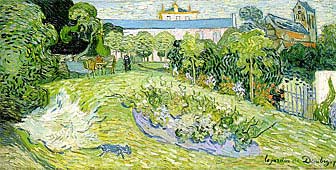Swiss art collection returns from exile

Seventeen major works of art are returning to their "home" in Basel after being in "exile" in the United States for more than four years.
The paintings – by leading impressionists and classic modernists – have been on loan to the Kimbell art museum in Fort Worth, Texas since 1997.
They were sent to the US after Swiss government signed an international convention – known as UNIDROIT – on the illegal transfer of stolen cultural objects from one country to another.
Although the ownership of the collection has never been in question, the Swiss foundation, which owns the collection, wanted to avoid any threat of legal action.
Because the US has not signed the convention, the foundation’s president, Ruedi Staechelin, had ownership of the paintings transferred to a New York-based trust.
“I have always said these paintings were not directly threatened, because they were bought long before the Second World War,” Ruedi Staechelin told swissinfo.
Uncertainty about property rights
“But the convention had started to create uncertainty about property rights, and under its terms, nobody starting to buy art would be sure, before the lapse of 50 years, whether he or she really should be the owner.”
The paintings are from a collection begun in the early 1920s by a Staechelin’s grandfather, Rudolf. Over 50 years ago, its core was placed on long-term loan to Basel’s fine arts museum, the Kunstmuseum.
Seventeen of the paintings were sent to Fort Worth, along with nine others from the collection, which had been exhibited for half a century in Geneva’s art and history museum.
Danger to collectors
Staechelin says he wanted to make a gesture against a convention he saw as “an enormous danger” to public and private collecting. So taking advantage of a legal technicality, the Staechelin foundation had the paintings transferred as a loan to the Fort Worth museum.
Staechelin says his “protest” was supported by “All the major museums in Switzerland, the Swiss Art Collectors’ Association, and the whole trade”.
The reaction was the same in other art centres around the world. A similar “coalition” brought together US museums and private collectors opposed to the convention.
The opponents’ view was that future art loans between countries would be jeopardised, and cooperation would suffer between the state and the private sector.
Previously the collection had been on loan to a Swiss museum: “Now it’s legally an American loan to a Swiss museum, and Switzerland would have problems forbidding the export of the property of a trust under New York law,” says Staechelin, who admits that the whole affair must sound very complicated to anyone who has not followed it from the outset.
For its part, the federal culture office in Bern has welcomed the paintings’ return. Andrea Raschèr, head of the department for the transfer of cultural objects, said: “We are glad this important collection has found a way of returning to Basel, the city where it was founded… It’s very important for our culture.”
“I have always said that I would like the paintings back in Basel,” says Staechelin, “and now we have found a solution.”
The collection returns to Switzerland this month, and will be on exhibition in the city’s Kunstmuseum from March 13.
by Richard Dawson

In compliance with the JTI standards
More: SWI swissinfo.ch certified by the Journalism Trust Initiative
You can find an overview of ongoing debates with our journalists here . Please join us!
If you want to start a conversation about a topic raised in this article or want to report factual errors, email us at english@swissinfo.ch.